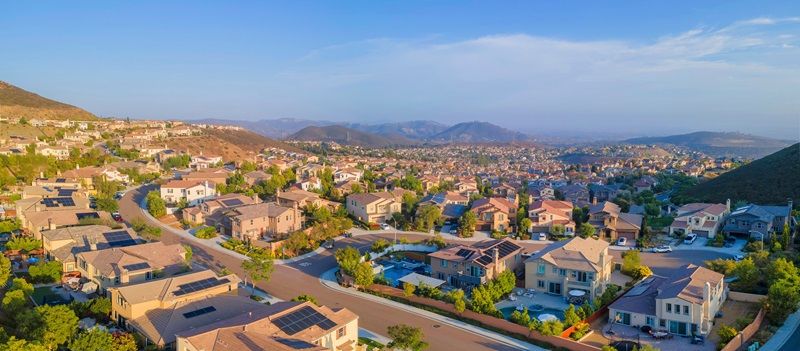California Gov. Gavin Newsom has signed legislation as part of the state’s 2025-2026 budget, enacting new laws that will advance housing and infrastructure. These measures, including Assembly Bill 130 (Committee on Budget) and SB 131 (Committee on Budget and Fiscal Review), advancing more affordable housing and infrastructure as part of California’s Abundance Agenda.
Together, the two budget trailer bills include a package that breaks down long-standing development barriers, modernizes California Environmental Quality Act (CEQA) review for critical housing and infrastructure, and creates new tools to speed up production, reduce costs, and improve accountability across the state.
“This isn’t just a budget. This is a budget that builds. It proves what’s possible when we govern with urgency, with clarity, and with a belief in abundance over scarcity,” said Gov. Newsom. “In addition to the legislature, I thank the many housing, labor, and environmental leaders who heeded my call and came together around a common goal—to build more housing, faster and create strong affordable pathways for every Californian. Today’s bill is a game changer, which will be felt for generations to come.”
For decades, barriers have stood in the way of progress, blocking the urgency that would allow the state to address housing scarcity and better provide Californians with what they need, affordability and greater housing access.
Climate change has also impacted the housing landscape in California, as wildfires earlier this year in the Los Angeles area had a significant impact on government housing-related programs, the insurance market, affordability, and delinquencies, with many of the effects reaching far beyond the regions of the fires themselves. Before the Hughes Fire erupted in northern Los Angeles during the third week of January, some estimates already put the losses as high as 1.6% of the Los Angeles housing market, with more than 24,000 housing units destroyed and more expected to be lost.
The housing and infrastructure package delivers foundational reforms to break down systemic barriers and help ensure California can meet the housing needs of current and future generations.
“With these historic laws, we finally have the tools we need to move the needle on affordability in California,” said Sen. Scott Wiener. “It isn’t easy to make changes this big, but Californians are demanding an affordable future and it’s our job to deliver for them no matter what. I’m incredibly proud of the work Governor Newsom, Assemblymember Wicks, Speaker Rivas, and my friend and partner Pro Tem McGuire did to push this bold package across the finish line and set us on a path to build again in California.”
The framework of the new legislation delivers:
- CEQA Reforms to accelerate housing and infrastructure by streamlining CEQA review to speed up delivery of housing and infrastructure projects—including infill housing, high-speed rail facilities, utilities, broadband, community-serving facilities, wildfire prevention, and farmworker housing—while maintaining protections for natural and sensitive lands. Also exempts local governments’ rezoning from CEQA as part of their implementation of approved housing elements to accelerate site readiness.
- Faster housing permitting and approvals by expanding the Permit Streamlining Act, limiting certain Coastal Commission housing appeals and speeding up Coastal permitting, and making permanent key provisions of the Housing Accountability Act and Housing Crisis Act.
- Regulatory stability to help control costs by freezing new residential building standards through 2031 with exceptions for emergency, fire, and conservation-related updates.
- Sustainable financing tools including a revolving fund to reinvest equity from stabilized affordable housing into new developments through the Affordable Housing Excess Equity Program, and by establishing a statewide CEQA VMT Mitigation Bank to provide an optional compliance tool to allow developers to more effectively fulfill their existing CEQA mitigation obligations by funding location-efficient affordable housing and infrastructure projects.
- More accountability and enforcement by strengthening oversight of local homeless shelters by requiring annual inspections by cities and counties—whether or not complaints are received—and provides stronger enforcement by allowing civil actions by both individuals and the Department of Housing and Community Development, and also requires annual reporting from all jurisdictions and authorizes the state to withhold funding from cities or counties that fail to comply.
- Supporting renters by more than doubling the Renters Tax Credit, subject to future appropriations, increasing the credit to up to $500 for qualified filers.
“Counties strongly support the CEQA overhaul in the state budget package,” said CSAC President and Inyo County Supervisor Jeff Griffiths. “No longer will CEQA be leveraged to stall critical county wildfire, water, and housing projects. This legislation will make California more affordable for families by helping to alleviate our housing crisis and, in turn, reducing homelessness.”
Douglas J. McCarron, President, United Brotherhood of Carpenters, said: “By streamlining housing construction, this budget will provide the legal foundation to get more homes built, bring housing costs down and add stronger enforcement of wage laws for thousands of construction workers on the job.”
Gov. Newsom’s budget includes $500 million for the Homeless Housing, Assistance and Prevention (HHAP) Round 7 in 2026-2027, contingent on enhanced accountability measures that require districts to maintain a compliant housing element, adopt encampment policies aligned with Administration guidance, and accept the reallocation of funds from districts that fail to meet performance benchmarks to those that deliver results.
Additional investments in homelessness response include:
- $81 million for the Home Safe Program
- $100 million for Encampment Resolution Funds
- $81 million for the Bringing Families Home Program
These targeted investments are designed to strengthen local capacity, while reinforcing performance and compliance.
And building on continued support from voter-approved Proposition 1, the Gov. Newsom announced nearly $103 million in Homekey+ awards to five counties. This first round of funding will create more than 315 permanent supportive housing units, which include housing with supportive services for veterans and individuals experiencing or at risk of homelessness due to mental health and/or substance use disorders. These homes are projected to serve thousands of residents over their lifetime.
This initial round is part of a larger investment: $1.033 billion in Proposition 1 bond funds will be available through Homekey+ for cities, counties, housing authorities, and Tribal entities to develop housing for veterans. An additional $1.11 billion is available for projects serving broader target populations, supported by a combination of Proposition 1 and HHAP funds. Homekey+ applications are being reviewed and approved on a rolling basis—HCD has received 67 applications requesting more than $1.14 billion as of June 24.
Between 2014 and 2019—before Governor Newsom took office—unsheltered homelessness in California rose by approximately 37,000 people. In 2024, while homelessness increased nationally by over 18%, California limited its overall increase to just 3%—a lower rate than in 40 other states. The state also held the growth of unsheltered homelessness to just 0.45%, compared to a national increase of nearly 7%. States like Florida, Texas, New York, and Illinois saw larger increases both in percentage and absolute numbers. California also achieved the nation’s largest reduction in veteran homelessness and made meaningful progress in reducing youth homelessness.
“We applaud the governor and the legislature for this breakthrough reform package to streamline housing production,” said Matthew O. Franklin, President & CEO, MidPen Housing. “We know that increasing housing supply is key to solving our affordability crisis, and are confident these measures contribute to a future with more affordable, environmentally sustainable housing options for all Californians.”






